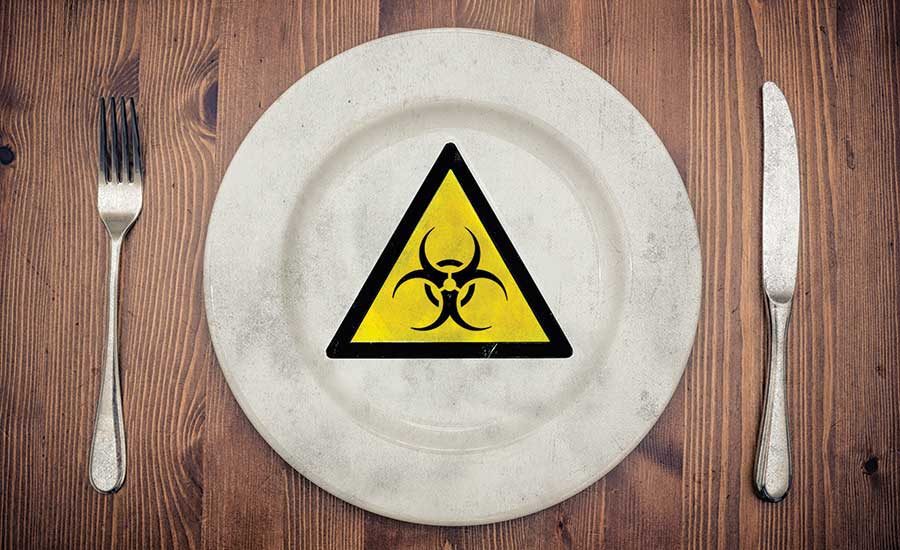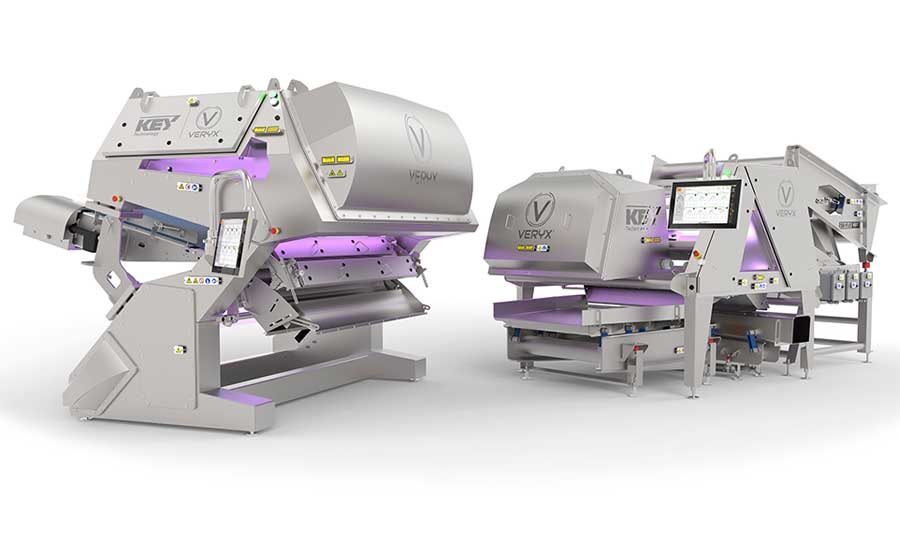Preventing food recalls due to allergens and other contamination
As food allergies escalate along with regulatory scrutiny, snack producers and bakeries need to up their food safety game.


courtesy of Key Technology

courtesy of Remco Products



Food allergies continue to manifest in children and adults at unprecedented levels without any end in sight.
According to Food Allergy Research & Education, 15 million Americans now live with food allergies, including 5.9 million children under age 18. That’s 1 in every 13 children—and around 30 percent of children with food allergies are allergic to more than one food.
While some theorists have suggested that self-diagnosis and confusion regarding the differences between food sensitivities and intolerances and true food allergy have inflated these numbers, medical evidence says otherwise. According to recent data from FAIR Health, Inc. private insurance claims related to anaphylactic food reactions rose 377 percent from 2007 to 2016. And half of adults with food allergies developed them after the age of 18.
To complicate matters, little scientifically verified reasoning exists to explain this snowballing phenomenon.
Meanwhile, controlling allergens in a food processing environment continues to plague producers, with undeclared food allergens causing a significant number of FDA recalls. Stericycle Expert Solutions reported that 96.9 percent of the recalled food units during the third quarter of 2017 were due to undeclared allergens, with the overwhelming majority of these (95.6 percent) considered Class I threats, meaning reasonable probability exists that the product would cause serious adverse health consequences or death. While these numbers are well above the average, Stericycle reports that food allergens have comprised 38.9 percent of FDA food recalls over the past year, and baked goods account for about 12 percent of recalls.
Product recalls can drain capital and wreak havoc on a brand’s reputation—or force companies out of business.
In this volatile environment, maintaining peak food safety and sanitation in snack and bakery facilities is of utmost importance.
“The top food safety concerns in the snack and bakery industry are undeclared allergens and foreign material,” says Stephanie Lopez, vice president, food safety services, Americas, AIB International, Manhattan, KS.
And snack and bakery are particularly prone to recalls. “While other food sector categories handle allergens, they tend not to handle the variety of allergens that snack and bakery facilities do,” says Lopez. “For this reason, snack and bakery facilities tend to top the list of food sector categories that have the greatest number of allergen-related recalls.”
Gaining control
“Facilities must have a comprehensive allergen control program that starts with supplier approval and continues through receiving, storage, production, and labeling,” says Lopez. “The most-common undeclared allergen situation is when a product is made precisely according to the formula on sanitary equipment with no cross-contact, but then gets placed the incorrect package. This results in inaccurate labeling. An example of this would be a pecan pie being placed in a pumpkin pie box. This is why label verification is such an important step.”
Another food safety concern today relates to products that don’t have a validated kill step in their manufacturing process, notes Colleen Zammer, senior director of market and product development, Bay State Milling Co., Quincy, MA.
While AIB International is collaborating with the American Bakers Association, Kansas State University and University of Georgia to establish kill step procedures for different baked goods, some products don’t fit into the model.
“If the product is not baked, extruded or fried, chances are, there are some food-safety risks in the finished products,” says Zammer. One example is cold-pressed nutrition bars.
Bay State Milling recently launched a SimplySafe heat treatment option for its grains, seeds and bakery blends, which performs an all-natural validated kill step. “Given today’s clean-label trends, applying the right combination of time and temperature exposure to raw materials is an ideal way to ensure minimal food-safety risk and no labeling hurdles,” says Zammer.
Radio Frequency Co., Inc., Millis, MA, also offers an option, notes Lisa Mitchell, marketing manager. Its RF Pasteurization process helps ensure the safety of ingredients like nut meats and spices that won’t undergo a kill step during processing.
Foreign materials ending up in products is also a common concern, notes Lopez. “Foreign material can come from a variety of sources, including raw materials and the processing environment.”
Foreign material is difficult to mitigate, because there are so many potential sources, notes Lopez. “We find that equipment maintenance issues, including temporary repairs, is a common finding in most of our inspections.”
Foreign materials can also be introduced with incoming ingredients, such as shells that come in with nuts, notes John Kadinger, market manager, Key Technology, Walla Walla, WA.
“It’s smart to ask ingredients suppliers to ensure their products are free of food-safety issues,” says Kadinger. “Harvested foods such as whole potatoes and nuts often include contaminants such as sticks, stones, glass, plastic, metal, insects and animal parts—foreign material that is easily eliminated with the use of a digital sorter.”
Sanitary solutions
“Sanitary equipment design and overall sanitation are great tools for combating food safety risks,” says Lopez—but development of equipment with a high degree of sanitary design has lagged. “While programs to certify equipment to sanitary design standards—such as ANSI Z50.2—have been around for years, few snack and bakery companies are requiring this of their equipment suppliers.”
Snack and bakery companies should look at sanitary design for both new and existing equipment, notes Dave Tessier, special projects and marketing research manager, Wire Belt Co. of America, Londonderry, NH. “Modifications that can be made to existing equipment to make sanitation easier by eliminating sandwiches, hollow areas and exposed maintenance items can make a big impact on sanitation efforts. In specifying new equipment, bakeries and snack food processors should look to standards developed by NSF/ANSI/3-A and weigh the upfront cost of sanitary design elements against the long term costs of sanitation labor and resources required for less-sanitary designs.” He notes that this standard is specific to meat and poultry, but is recognized by the industry for its high level of sanitary design.
Sanitation is the backbone of any food-safety program, notes Lopez. “Unfortunately, we’ve seen a slide backward in sanitation across the food industry. A decade or two ago, it was common practice to have a professional sanitarian operating in bakeries. Today, that role is often combined with that of quality manager, which dilutes the efforts on both fronts.”
Salmonella and Listeria monocytogenes are top concerns in snack and bakery facilities, which frequently feature dry and moist environments, notes Amit M. Kheradia, education and technical support manager, Remco Products Corp., Zionsville, IN.
“Improperly constructed equipment may be harborage points for filth, chemical residues and food product that could create an unsanitary and noncompliant environment in the facility,” says Kheradia. “With time, unsanitary equipment surfaces and areas may become difficult to clean in between runs.” Operators can discover such problems through environmental monitoring of equipment surfaces.
“Environmental monitoring and control involves not only the visual checking of food-contact surfaces and microbiological and quality testing of the final product,” says Kheradia, “but also the monitoring of food-contact and non-food-contact surfaces—using microbiological or ATP (adenosine triphosphate) testing—to confirm that proper food-safety and sanitation practices are being carried out in the facility. Basic food-safety practices like washing hands, preventing cross-contamination incidences, cleaning and sanitizing the equipment, and maintaining the facility in a sanitary condition go a long way in assuring a safe and high-quality product.”
Be prepared
For products that will contain allergens, companies need to implement process verification and quality control at each process level—receiving, storage, handling, processing, packing, labeling and shipping—to ensure that the right allergens and aids are used and correctly declared on the product label, notes Kheradia.
Also, collaborate with equipment suppliers that make food safety a high priority. “Partner with them and draw on their expertise in designing production lines and selecting the equipment,” says Kadinger. “Consider their sanitary design principles and look for open designs that are easy to clean. Other features, such as oil-free drives, self-draining surfaces, the elimination of laminations and enclosed hollow bodies that can harbor bacteria, polished welds, and surface finishes that resist biofilm formation further enhance sanitation to maximize food safety.”
If a recall situation does arise, having the right network in place to handle it can help minimize the situation. “Food traceability is a top concern of many companies in the snack and bakery industry, and there is still much work to be done before the industry can say it is capable of fully tracing product ingredients,” says Angela Fernandez, vice president of retail grocery and foodservice, GS1 US, Lawrenceville, NJ. “It takes the commitment of trading partners, including manufacturers, distributors, solution providers and retailers to enable end-to-end traceability.”
Food companies need to ensure that any ingredients that come into question during a recall or withdrawal can be traced back to their source and isolated to prevent harm. “Think about the cumin recall in 2015, which was the largest of any recall due to an allergen-contaminated spice,” says Fernandez. “About 700 different products were recalled by more than 40 manufacturers and retailers in the U.S. alone after it was found that cumin may have contained undeclared traces of peanut and almond.” This ingredient was very difficult to isolate, because it was included in such a wide variety of products, and ingredient-level traceability is not yet widely implemented.
“An effective traceability program provides visibility into all stops along the supply chain,” says Fernandez. “Traceability involves collecting and maintaining product information that supports, at the very least, ‘one up/one down’ visibility of the product’s movement through the distribution channel. The internal data and processes a company uses to track products is integrated into a larger system of external data exchange that takes place between trading partners.” The focus here is on basic principles of unique identification.
“GS1 Standards enable traceability by providing a common language,” suggests Fernandez. “Standards uniquely identify products in the supply chain and ensure systems interoperability—both of which can help companies quickly determine a safe product from a potentially harmful product. During a recall, companies with strong traceability programs can pinpoint affected product down to the UPC barcode, which batch it came from in the manufacturing process, and during which dates it may have become contaminated.” Producers can then share that information almost instantly with retailers.
While preventing recalls in the first place is always the brass ring, when such events arise, rapid responsiveness that minimizes lost revenue and brand damage can be a company’s saving grace.
This article was originally posted on www.snackandbakery.com.
Looking for a reprint of this article?
From high-res PDFs to custom plaques, order your copy today!










